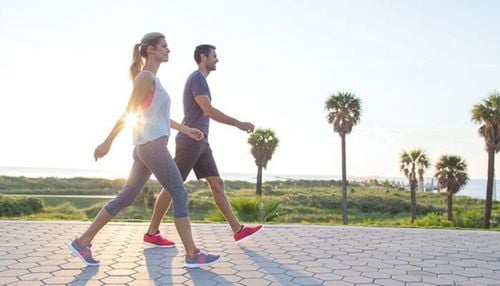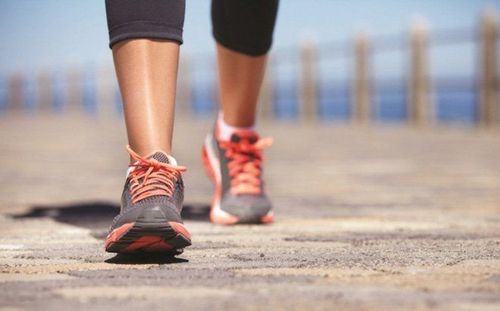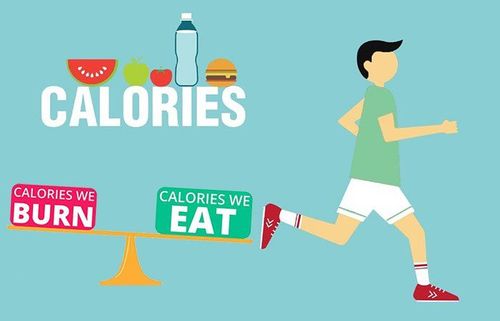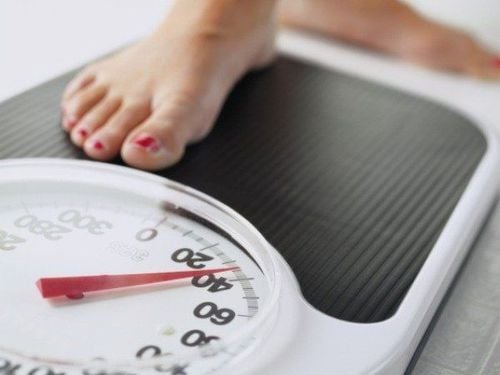This is an automatically translated article.
A daily walk has the potential to offer many potential health benefits, including weight loss. It is also one of the easiest and most cost-effective forms of exercise a person can do.
1. Is walking effective for weight loss?
Doctors are of the same opinion that inactivity is a potential cause of many preventable diseases, such as heart disease and obesity. Research has demonstrated that the positive effects that walking can have on fat burning and waist reduction in obese women. The women who walked lost weight at intervals of 50-70 minutes 3 days per week for a total of 12 weeks. After the study, the authors also found that the study participants lost an average of 1.5% body fat and 3 centimeters around their waistlines.
For example, you will burn 100 to 300 calories and fat in 30 minutes at a brisk walking pace (depending on your weight) or can burn about 200 to 600 calories in an hour of walking. During the first 30 minutes of exercise, your body is burning stored sugar for fuel. They are used up after about 30 minutes to continue helping the body release fat from fat cells while burning fat for fuel. Your body fat stores are exactly what you want to cut when you're trying to lose weight, and that's a good reason to increase your walking endurance.
2. Increase walking speed
Regular walks can help with weight loss and improve fitness levels. Similar to activity: running, swimming, and other forms of aerobic exercise, speed makes all the difference. A person walking at a brisk pace will be able to burn more calories than someone walking at a slow pace.
However, increasing speed does not mean that you need to run all the time to burn the maximum amount of calories for everyone. So, brisk walking will burn extra calories to help with weight loss.

Đi bộ thường xuyên có thể giúp giảm cân và cải thiện mức độ thể chất
3. Use a weight vest
Adding more weight when working out will burn more calories. For example, a person wearing a weight vest while walking will have to work harder.
Research has proven that a person walking 1.5 km on a flat surface while wearing a weight vest weighing 15% of their body weight, burns 12% more calories than a person not wearing this shirt. Or a person wearing a weight vest that is 10% of their body weight and who walks at the same pace as walking on a 5-10% slope burns an average of 13% more calories.
Although a weighted vest can help burn extra calories, we should avoid wearing weights around our ankles or wrists. Both types of exercise can lead to muscle imbalances and injury.
When combining new exercises with a weight vest, you should talk to your doctor before using these tools. People with back or neck problems should not use weight vests. Those who can safely wear a weighted vest will see an improvement in the number of calories they burn.
4. Walk uphill
To help increase your calorie burn, you should walk uphill regularly. For some specific situations, walking uphill means increasing the incline of the treadmill, while others may want to incorporate climbing more hills into their outdoor walking routine.
So you should aim to walk up hills, stairs or inclines about two to three times a week.
5. Pay attention to the level and posture of walking
When it comes to walking, it's important to make sure you maintain your level and posture. A person should walk with their eyes always looking ahead, as this increases walking speed and can increase stride length during walking. While walking, also focus on tightening the abdominal muscles and buttocks. These activities should be performed continuously throughout the exercise. This technique helps build body strength while keeping the body injury-free during the walk.

Đi bộ cũng cần thực hiện đúng tư thế giúp tăng khả năng kéo dài sải chân
6. Combine with resistance training exercises
Adding resistance training exercises such as: tricusps, squats, push-ups can make walking more beneficial. Plus, short exercise intervals help increase a person's heart rate and build muscle. They can also make a walking routine more enjoyable.
7. Take a brisk walk for a short period of time
Walking briskly for short periods of time can be effective to increase the number of calories the body burns while walking. Apply by, should first walk about 5 to 10 minutes to warm up. Then, increase the speed and continue at a quick but steady pace for 10 to 15 seconds before returning to your normal walking pace. This can be repeated throughout the walk.
8. Do short walks three times a day
While long walks have many benefits, shorter, more frequent walks can also be healthy. Some people find it easier to maintain daily exercise with short walks throughout the day rather than taking longer walks once per day. Experts say that taking a walk after each meal also brings many benefits. According to studies, sedentary people over the age of 60, walking for 15 minutes three times a day after meals helps control blood sugar better than walking once a day, 45 minutes a day.

Đi bộ ngắn và thường xuyên hơn có thể tốt cho sức khỏe người tập luyện
9. Increase the number of steps you walk each day
Taking the stairs can increase the number of daily steps. Popular pedometers and trackers encourage people to take 10,000 steps a day, and studies also agree that 10,000 steps is ideal.
People who are interested in walking for weight loss should regularly take at least 10,000 steps per day. Some people may even want to increase their total steps beyond this number. Increasing the number of steps in the process of walking is effective in losing weight.
You can increase the number of steps you take each day by changing some daily exercise patterns. Some tips to use to achieve this goal include: take the stairs instead of the elevator, park your car farther from the door at the store, office or school, walk to work, school or activities other action if possible.
Before adopting walking with adding weight or increasing intensity through increasing speed or incline, you should talk to your doctor, healthcare professional to get the best advice.
Currently, Vinmec International General Hospital has developed a general health checkup package for all customers and ages. The examination helps the doctor understand the health status so that he can best adjust it to suit his current condition.
Especially for people who are overweight, obese, have a history of high blood pressure... a periodical health check will help prevent many dangerous diseases, thereby providing timely intervention.
Please dial HOTLINE for more information or register for an appointment HERE. Download MyVinmec app to make appointments faster and to manage your bookings easily.
Reference source: mayoclinic.org - verywellfit.com - medicalnewstoday.com












